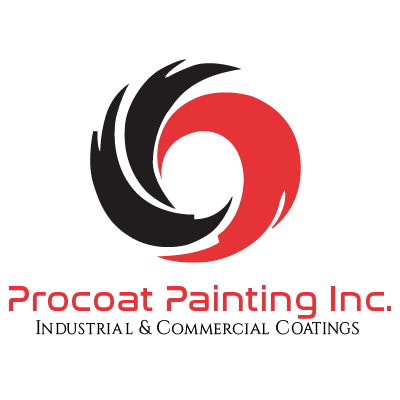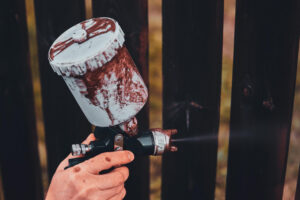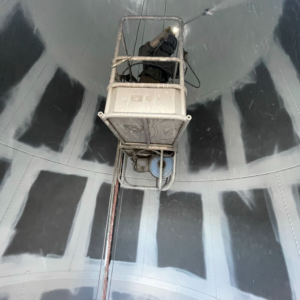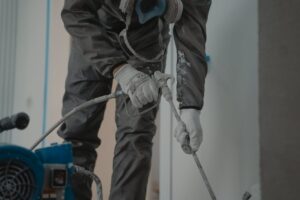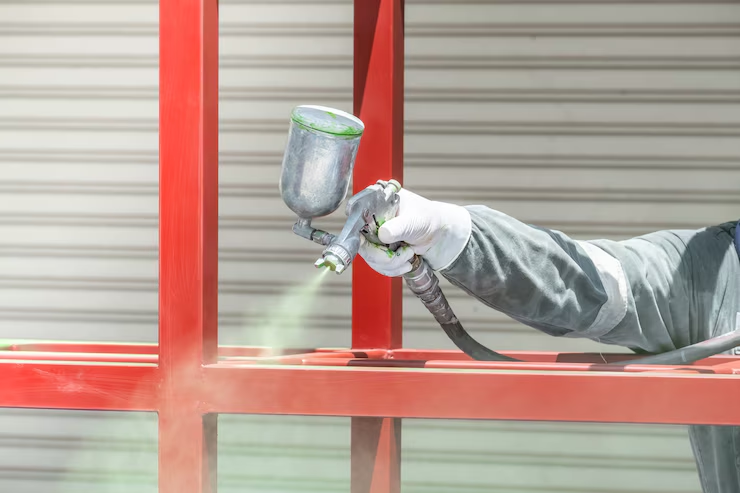
Painting metal structures can seem like a daunting task, but with the right steps, it becomes manageable and safe. Metal surfaces are strong and durable, but they require proper care to keep them looking great and protected from rust or corrosion. Whether it’s a fence, a roof, or a large commercial structure, painting metal involves a few specific steps to ensure the job is done correctly.
The key to a successful paint job begins with thorough preparation. This involves inspecting the surface and gathering the necessary tools to keep everything on track. Safety gear is also crucial to protect both the painter and the structure during the process. Having the right equipment from the start ensures a smoother experience.
After prepping, the focus shifts to cleaning and priming the metal surface. A clean surface free of rust and debris helps the paint adhere better, leading to a finish that lasts longer. With these foundational steps in place, continuing to paint and maintain the structure carefully will ensure it looks impressive and stays in top condition for years to come.
Preparation Phase
The first step to painting metal structures safely is to prepare the site and materials thoroughly. Start by assessing the metal structure for paint readiness. Inspect the surface for any signs of rust, peeling paint, or damage. These issues need attention before painting can begin. A well-prepared surface contributes significantly to the final outcome, ensuring the paint adheres properly and lasts longer.
Next, gather all necessary safety gear and tools. Personal protective equipment (PPE) is crucial to maintain safety throughout the project. This includes gloves, goggles, and masks to protect against paint fumes and particles. For outdoor projects or elevated structures, a sturdy ladder or scaffolding might also be required to safely reach high areas.
In addition to safety gear, ensure you have all painting tools ready. Essential items include brushes, rollers, paint trays, and a sprayer for larger surfaces. Depending on the project size, having several types of brushes will help manage different areas effectively. Also, have cleaning supplies on hand for any spills or drips. By planning ahead and organizing your tools and safety measures, you set the stage for a smooth and efficient painting process.
Surface Cleaning and Priming
Once the preparation is complete, it’s time to focus on cleaning and priming the metal surface. Effective surface cleaning is critical to remove dirt, grease, and any oxidation that might hinder paint adhesion. Use a wire brush or sandpaper to scrub away loose paint and rust spots. This creates a smooth, clean surface for the new paint to stick to.
For detailed cleaning, soapy water or a mild detergent can dissolve grime and residue. Ensure the metal is dry before moving on, as moisture can interfere with the primer and paint application. A clean surface drastically improves the overall quality and durability of the paint job.
The next step is priming, which is just as important as cleaning. Priming provides a base that helps paint adhere better, seals the metal, and offers protection against rust. Choose a primer specifically designed for metal surfaces. For metals prone to rust, like iron or steel, a rust-inhibiting primer offers excellent protection. Apply the primer in even coats, ensuring full coverage. Let it dry completely according to the manufacturer’s instructions before proceeding to the painting phase. Proper cleaning and priming set a solid foundation, enhancing the paint’s longevity and performance.
Applying the Paint
Once the surface is primed, the next step is applying the paint. Selecting the right type of paint for metal is crucial for achieving a lasting finish. Look for paints specifically designed to withstand outdoor elements and resist corrosion. Options like epoxy or acrylic enamel are durable and provide excellent coverage.
To begin painting, follow these steps to ensure even and safe application. Start by stirring the paint thoroughly to ensure consistency. When using a brush or roller, apply the paint in thin, even coats to prevent drips and uneven patches. For larger structures, a paint sprayer can help achieve a uniform finish faster, covering more area with each pass.
Remember to follow the recommended drying time between coats to avoid any issues with adhesion. Typically, two to three coats are sufficient to provide a solid layer of protection and a smooth finish. Always check the paint manufacturer’s instructions for specific guidance on application and drying times. By diligently applying paint in layers, you create a tough, weather-resistant coating that enhances both the appearance and durability of the metal.
Final Checks and Maintenance Tips
After the paint has dried, it’s time to perform final checks and consider maintenance tips to prolong the paint’s life. Inspecting the finished paintwork ensures the job meets the desired standards. Look for any spots that might have been missed or areas where the paint coverage is not as thick.
Conduct a thorough walk-around inspection to identify any imperfections. Address these immediately by applying touch-ups as needed. This proactive approach will help maintain the quality of the paint job and protect the metal beneath.
Routine maintenance is key to keeping the paint looking its best. Simple practices like regular cleaning to remove dirt and debris can prevent long-term wear. Consider creating a maintenance schedule to check for any new signs of damage or wear on the paint. This could be quarterly or bi-annually, depending on exposure and conditions. By staying attentive to maintenance, you ensure the painted structure remains visually appealing and structurally robust for years.
Conclusion
Completing a successful paint job on metal structures is a rewarding endeavor that not only enhances the appearance but also extends the life of the structure itself. By following a thorough process involving preparation, cleaning, priming, and painting, you ensure a high-quality finish that stands up to the elements. After painting, engaging in regular inspections and maintenance guarantees long-lasting results.
If you’re looking to transform your metal structures with expert painting services, reach out to Procoat Painting Inc. Our team of professionals in Greater Cincinnati brings experience and skill to every project, ensuring your structures look great and stay protected. Contact our professional painting company today to discover how our painting solutions can meet your needs.
